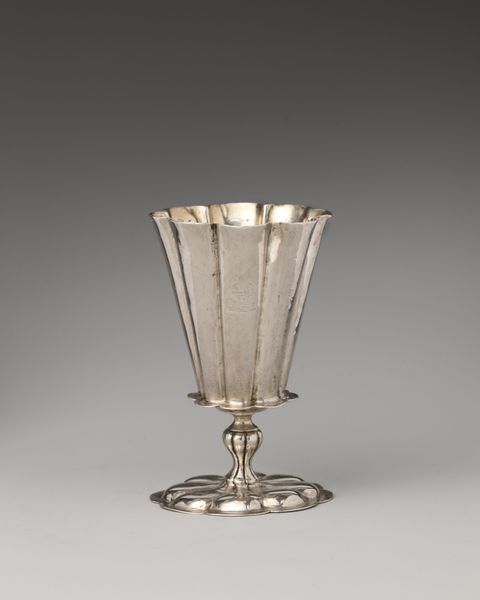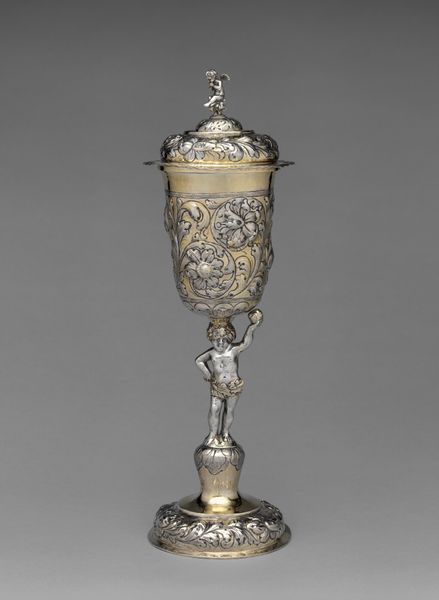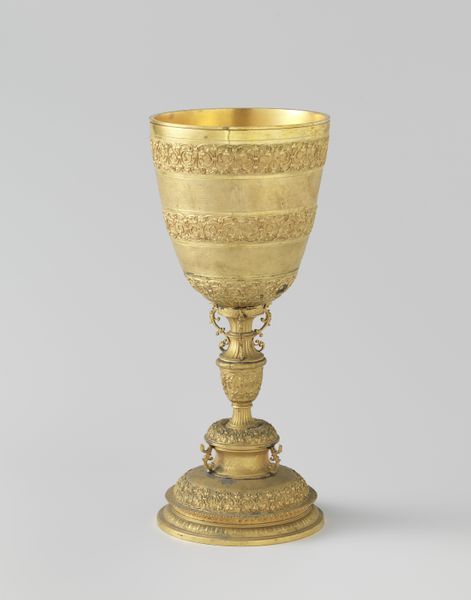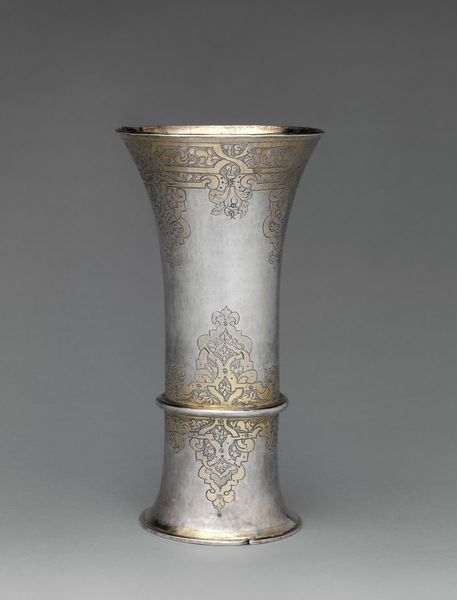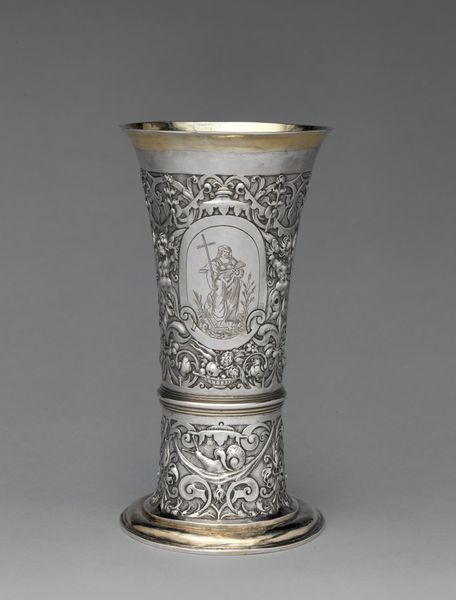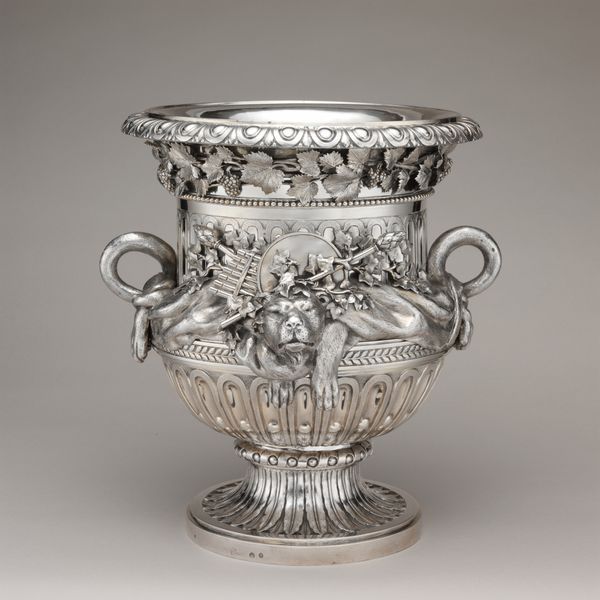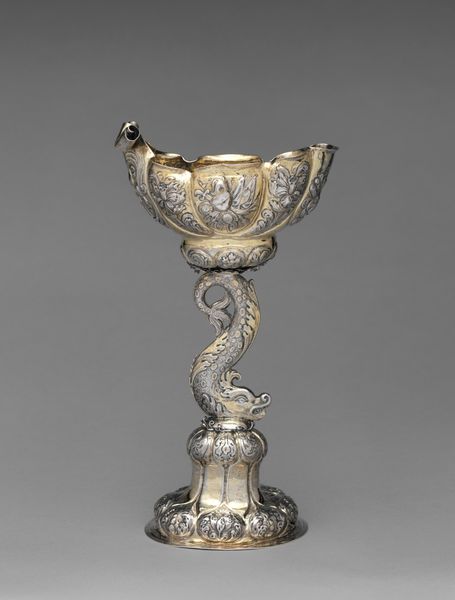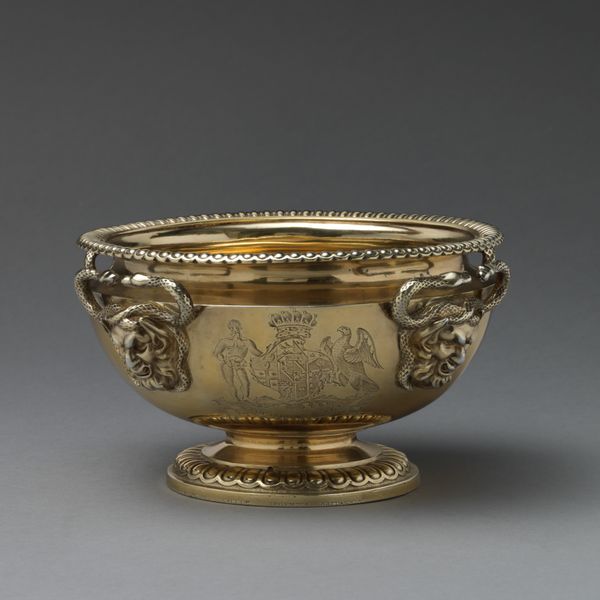
silver, metal, sculpture
#
silver
#
baroque
#
metal
#
sculpture
Dimensions: Overall: 7 7/8 x 4 13/16 in. (20 x 12.2 cm)
Copyright: Public Domain
Editor: Here we have a baroque silver beaker made by Georgius Olescher Jr., sometime between 1725 and 1755. The first thing I notice is the way the light plays on the different textured panels. What do you see in this piece? Curator: Immediately, the fluted structure catches the eye. Notice how the alternating smooth and elaborately ornamented vertical panels create a dynamic rhythm, guiding the viewer's gaze upward. Editor: It's interesting that some panels are so plain, especially compared to the intricate detailing in the others. Why that contrast? Curator: Indeed. This juxtaposition is crucial. The smooth panels act as a visual pause, a negative space that accentuates the density and complexity of the ornamented sections. It’s a calculated interplay of form and decoration, forcing us to consider the individual elements and their relationship to the whole. Semiotically, we might consider how the ornamentation acts as a signifier of status or luxury, set against the simplicity of the ground material. Editor: So, it's not just decoration for decoration's sake; it’s a dialogue between simplicity and complexity built into the structure. Curator: Precisely. Furthermore, observe the sculpted base. Its function is both practical, offering stability, and aesthetic, mirroring the upper rim. Do these echoing shapes suggest a hierarchy? Editor: I see what you mean. It seems the eye travels up, and then almost grounds itself, back to the base, a satisfying completion. Curator: Indeed, an interplay, creating internal balance. Form follows intent, and it’s revealed in pure observation. Editor: It’s changed my view, focusing my eye on shape and surface and their connections has been fascinating.
Comments
No comments
Be the first to comment and join the conversation on the ultimate creative platform.
